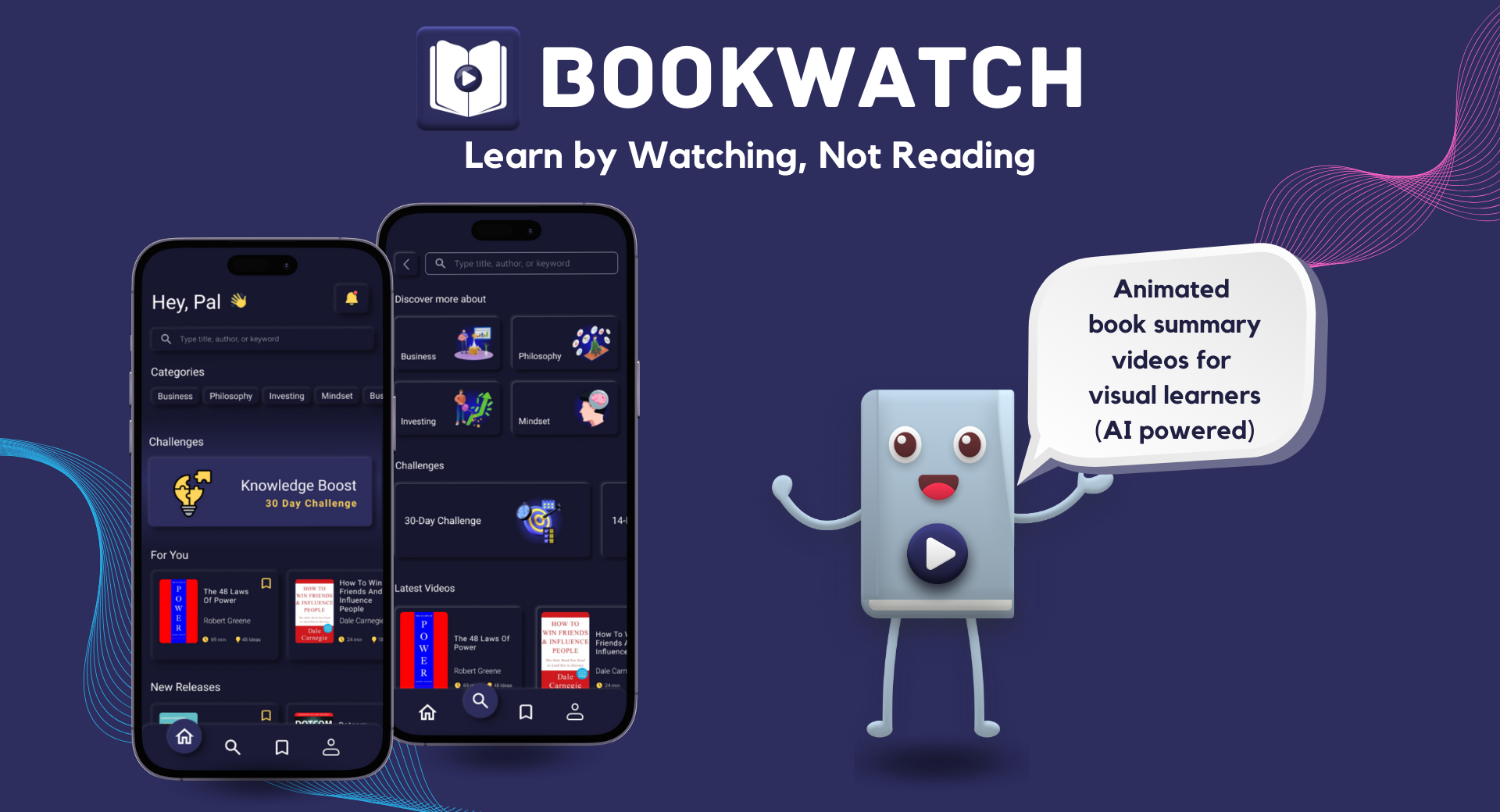Table of Contents
Overview
In today’s fast-paced world, finding the time to absorb valuable insights from non-fiction books can be a challenge. Enter BookWatch, an innovative AI-powered app designed to transform your learning experience. BookWatch takes best-selling non-fiction books and distills them into engaging, animated summary videos, making complex concepts accessible and enjoyable for visual learners. If you’re looking for a quick and effective way to grasp key takeaways from popular books, BookWatch might be the perfect solution.
Key Features
BookWatch boasts a range of features designed to optimize your learning experience:
- Animated Book Summaries: Transforms non-fiction books into concise, visually appealing animated videos.
- AI-Generated Content: Leverages artificial intelligence to synthesize key insights and create compelling narratives.
- Visual Storytelling for Non-Fiction Books: Presents information through engaging visuals and animations, enhancing comprehension and retention.
- Curated Bestseller Library: Offers a selection of popular and impactful non-fiction titles.
- Mobile App Interface: Provides convenient access to summaries on the go, allowing for learning anytime, anywhere.
How It Works
BookWatch simplifies the process of learning from non-fiction books. Users begin by browsing the app’s curated catalog of titles. Once a book is selected, the AI engine generates an animated summary that highlights the core concepts and key takeaways. These summaries are presented in a visually engaging format, incorporating animations, voiceovers, and concise explanations to deliver an immersive learning experience in just a few minutes.
Use Cases
BookWatch caters to a variety of learning needs and preferences:
- Learning on the Go: Ideal for busy professionals who want to absorb key insights during commutes or breaks.
- Alternative to Reading for Busy Professionals: Provides a time-efficient way to stay informed without committing to lengthy reading sessions.
- Visual Learning Aid for Students: Complements traditional learning methods by offering a visual representation of complex topics.
- Quick Content Consumption Before Book Purchases: Allows users to preview a book’s content and determine if it aligns with their interests before committing to a purchase.
Pros & Cons
Like any tool, BookWatch has its strengths and weaknesses. Understanding these can help you determine if it’s the right fit for your learning style.
Advantages
- Saves Time: Condenses hours of reading into minutes of engaging video content.
- Appeals to Visual Learners: Caters to individuals who learn best through visual aids and animations.
- Engaging Presentation: Makes learning enjoyable and memorable through dynamic visuals and voiceovers.
Disadvantages
- Lacks Depth of Full Books: Summaries cannot provide the same level of detail and nuance as reading the entire book.
- Limited to Supported Titles: The app’s library is restricted to the books it currently supports.
- Summary Quality Depends on AI Synthesis: The accuracy and effectiveness of the summaries are contingent on the AI’s ability to accurately interpret and synthesize the source material.
How Does It Compare?
While BookWatch offers a unique approach to book summaries, it’s worth considering its competitors. Blinkist provides text and audio summaries but lacks the visual animation aspect. Headway offers similar content but doesn’t incorporate visual storytelling elements, making BookWatch stand out with its engaging animated format.
Final Thoughts
BookWatch presents a compelling solution for individuals seeking a quick, engaging, and visually driven approach to learning from non-fiction books. While it may not replace traditional reading for those seeking in-depth knowledge, it offers a valuable tool for busy professionals, visual learners, and anyone looking to absorb key insights in a time-efficient manner. If you value visual learning and want to stay informed on the go, BookWatch is definitely worth exploring.
